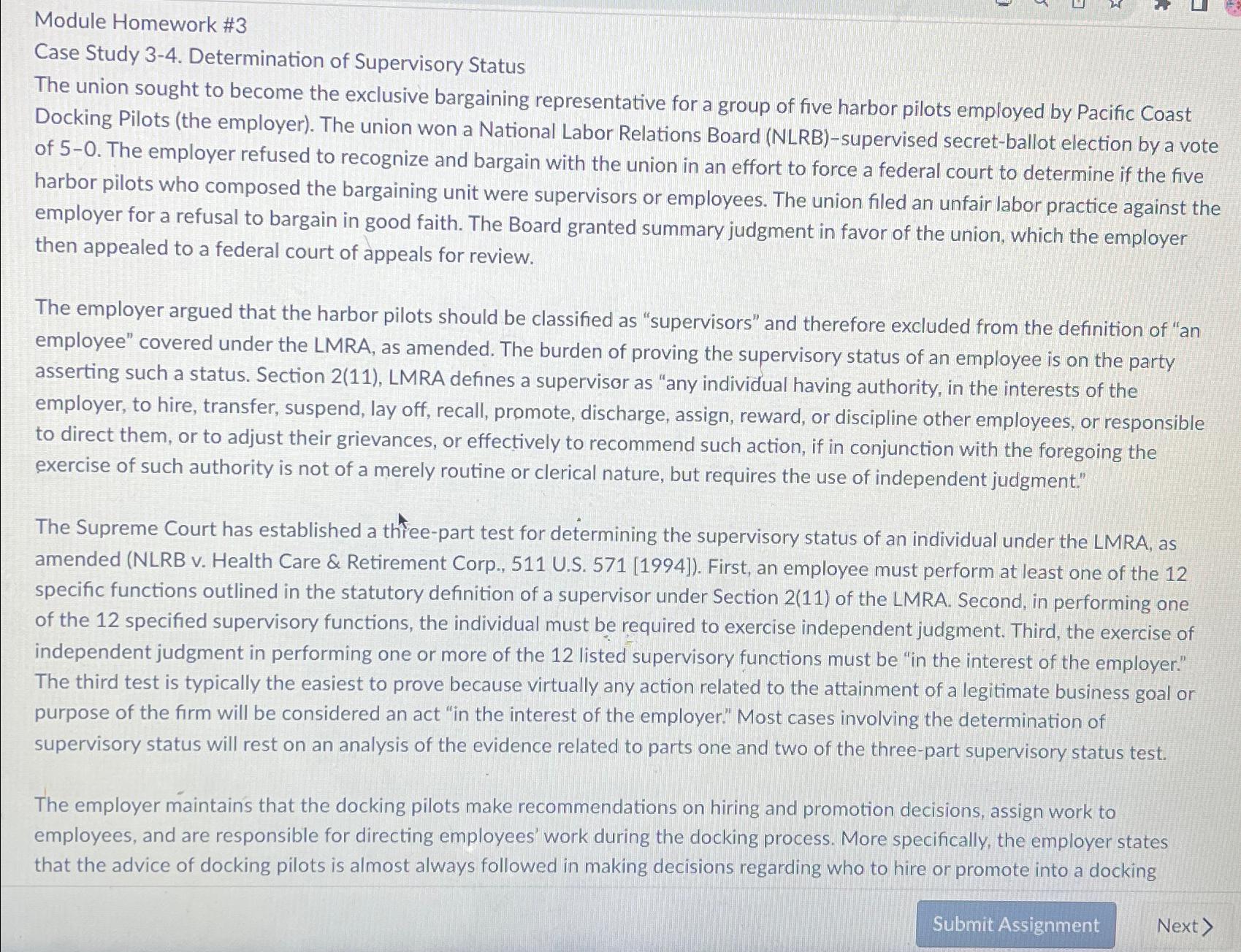Answered step by step
Verified Expert Solution
Question
1 Approved Answer
Module Homework # 3 Case Study 3 - 4 . Determination of Supervisory Status The union sought to become the exclusive bargaining representative for a
Module Homework #
Case Study Determination of Supervisory Status
The union sought to become the exclusive bargaining representative for a group of five harbor pilots employed by Pacific Coast Docking Pilots the employer The union won a National Labor Relations Board NLRBsupervised secretballot election by a vote of The employer refused to recognize and bargain with the union in an effort to force a federal court to determine if the five harbor pilots who composed the bargaining unit were supervisors or employees. The union filed an unfair labor practice against the employer for a refusal to bargain in good faith. The Board granted summary judgment in favor of the union, which the employer then appealed to a federal court of appeals for review.
The employer argued that the harbor pilots should be classified as "supervisors" and therefore excluded from the definition of an employee" covered under the LMRA, as amended. The burden of proving the supervisory status of an employee is on the party asserting such a status. Section LMRA defines a supervisor as "any individual having authority, in the interests of the employer, to hire, transfer, suspend, lay off, recall, promote, discharge, assign, reward, or discipline other employees, or responsible to direct them, or to adjust their grievances, or effectively to recommend such action, if in conjunction with the foregoing the exercise of such authority is not of a merely routine or clerical nature, but requires the use of independent judgment."
The Supreme Court has established a thieepart test for determining the supervisory status of an individual under the LMRA, as amended NLRB v Health Care & Retirement Corp., US First, an employee must perform at least one of the specific functions outlined in the statutory definition of a supervisor under Section of the LMRA. Second, in performing one of the specified supervisory functions, the individual must be required to exercise independent judgment. Third, the exercise of independent judgment in performing one or more of the listed supervisory functions must be in the interest of the employer." The third test is typically the easiest to prove because virtually any action related to the attainment of a legitimate business goal or purpose of the firm will be considered an act in the interest of the employer." Most cases involving the determination of supervisory status will rest on an analysis of the evidence related to parts one and two of the threepart supervisory status test.
The employer maintains that the docking pilots make recommendations on hiring and promotion decisions, assign work to employees, and are responsible for directing employees' work during the docking process. More specifically, the employer states that the advice of docking pilots is almost always followed in making decisions regarding who to hire or promote into a docking

Step by Step Solution
There are 3 Steps involved in it
Step: 1

Get Instant Access to Expert-Tailored Solutions
See step-by-step solutions with expert insights and AI powered tools for academic success
Step: 2

Step: 3

Ace Your Homework with AI
Get the answers you need in no time with our AI-driven, step-by-step assistance
Get Started


